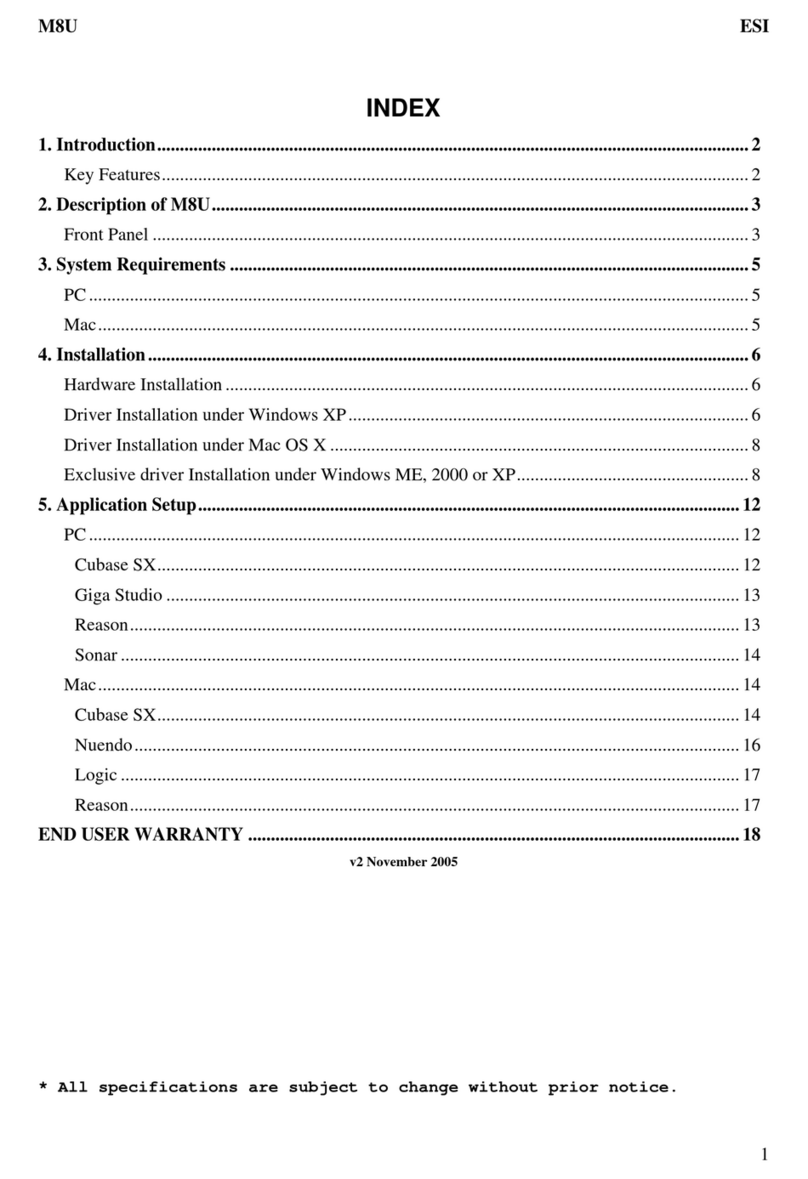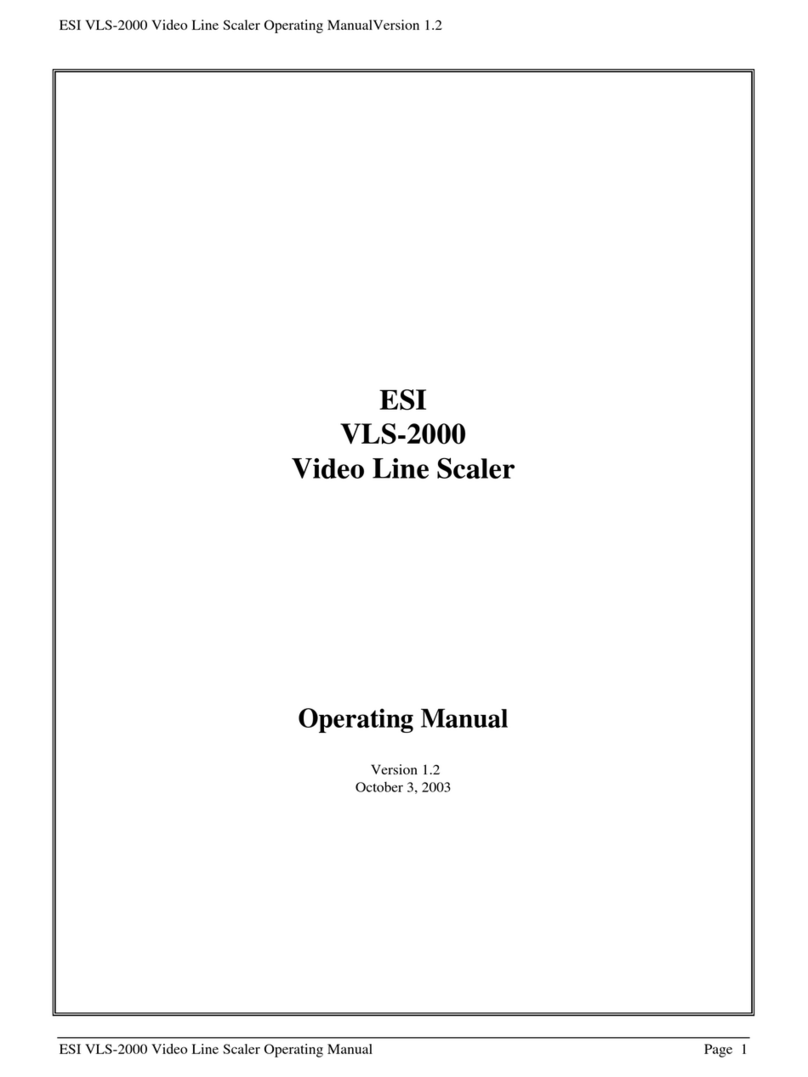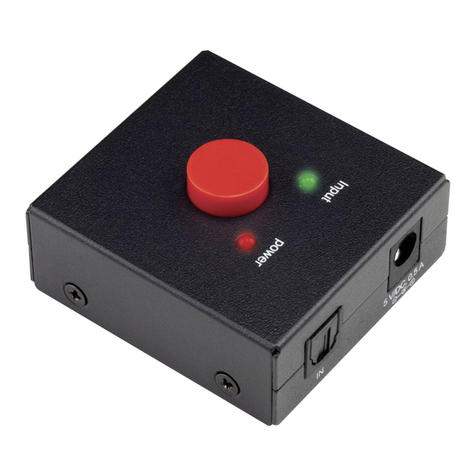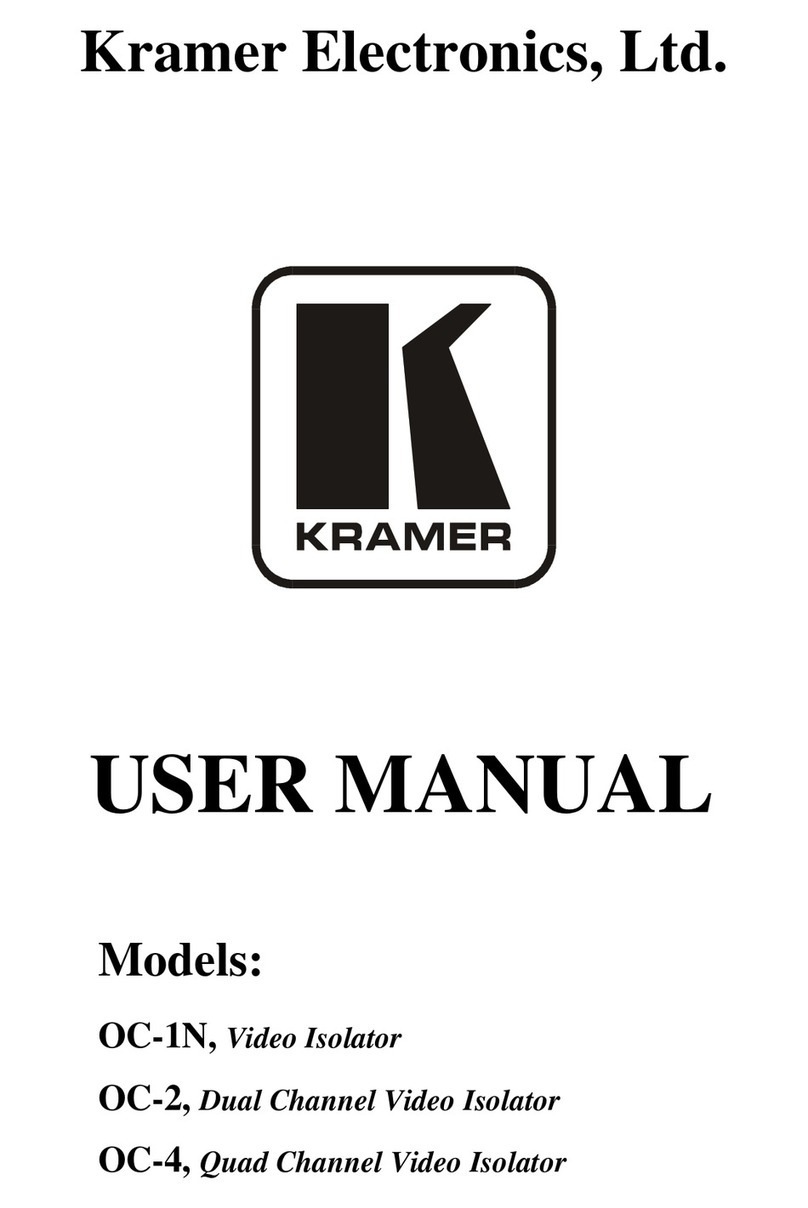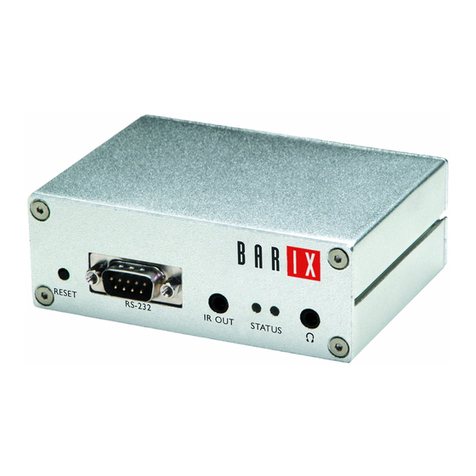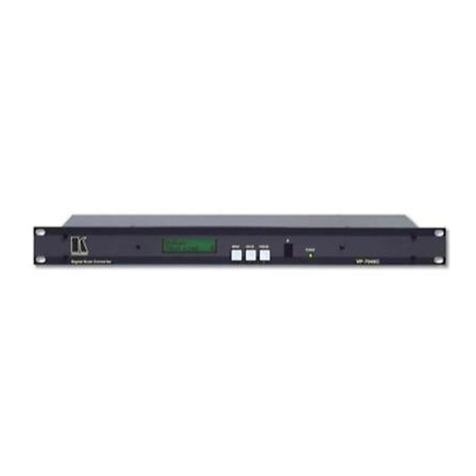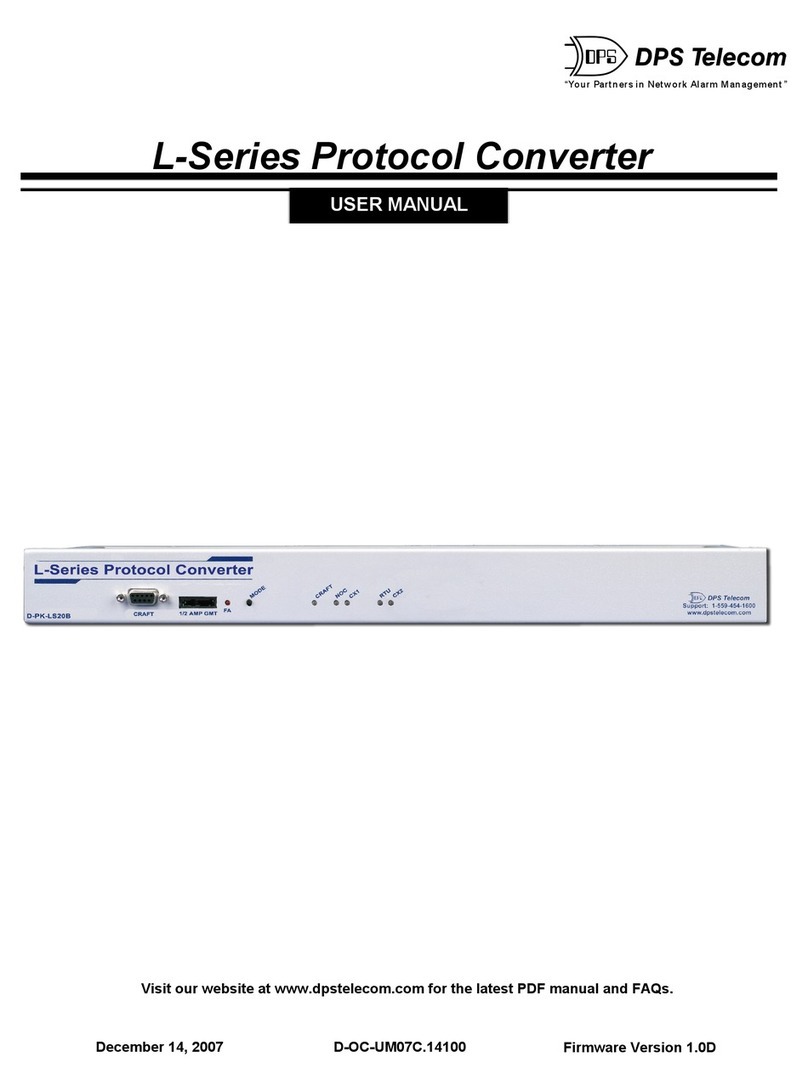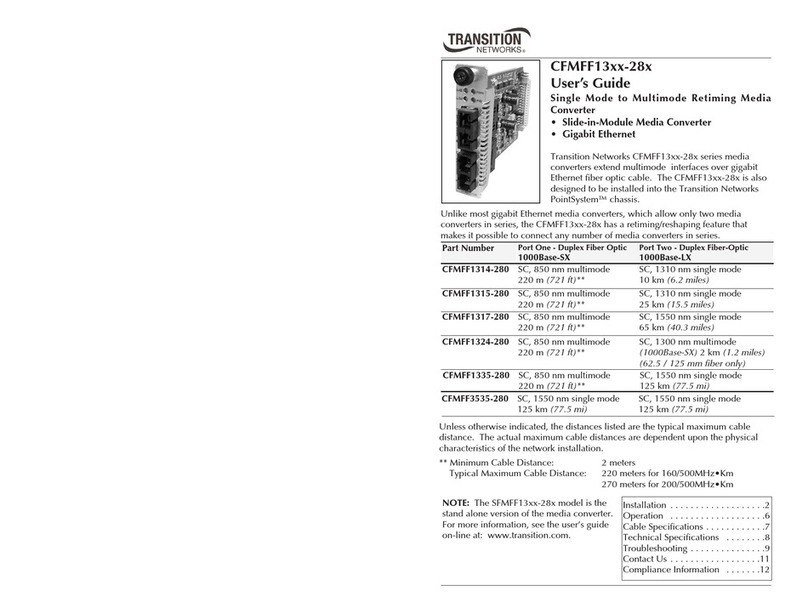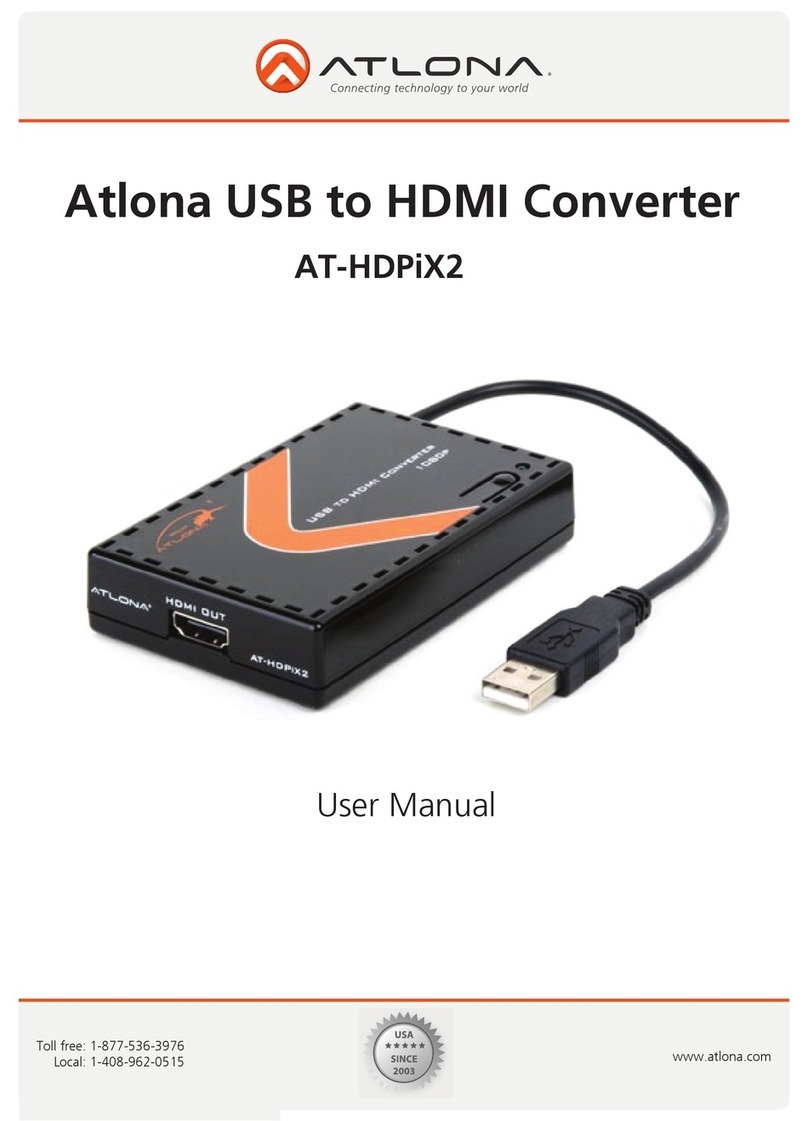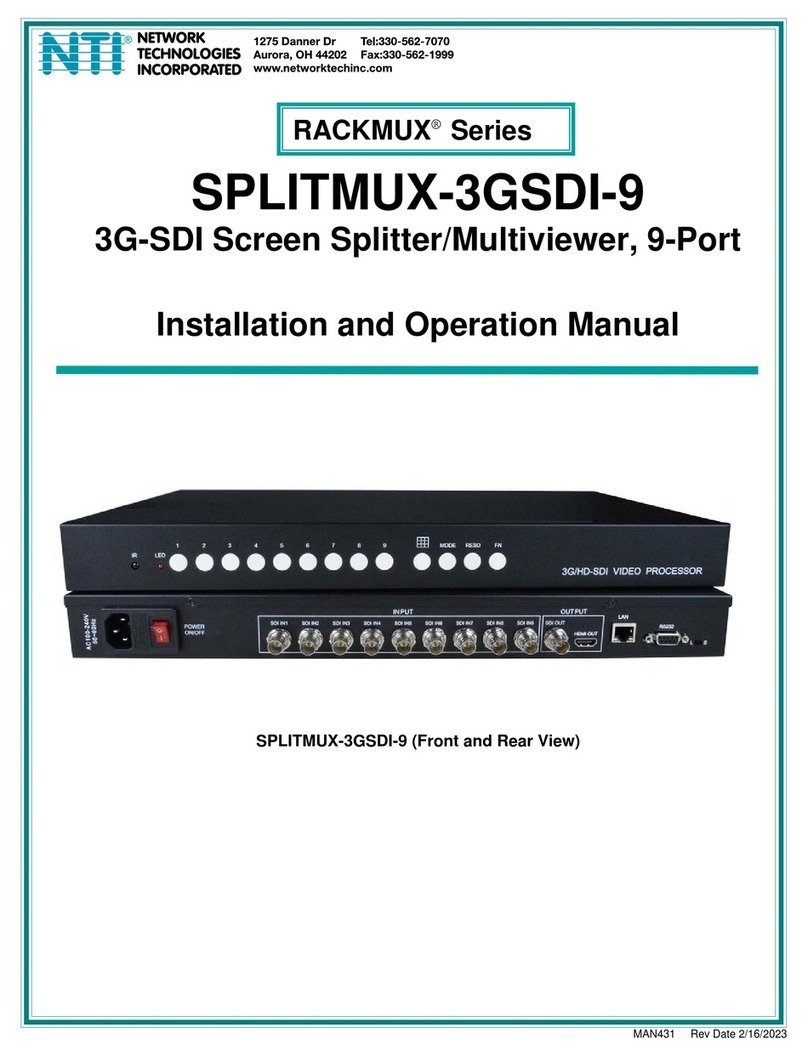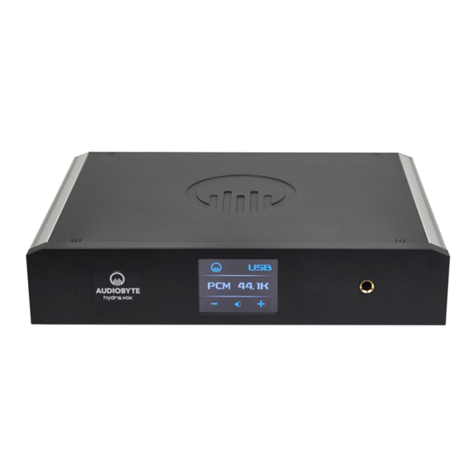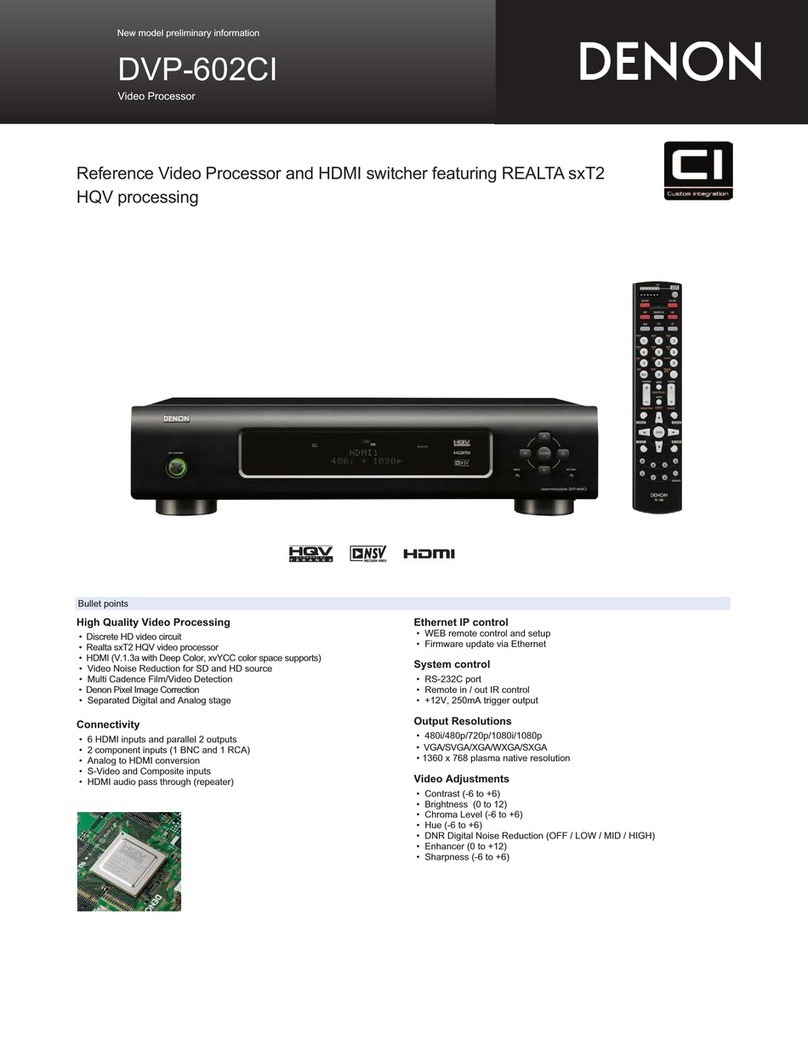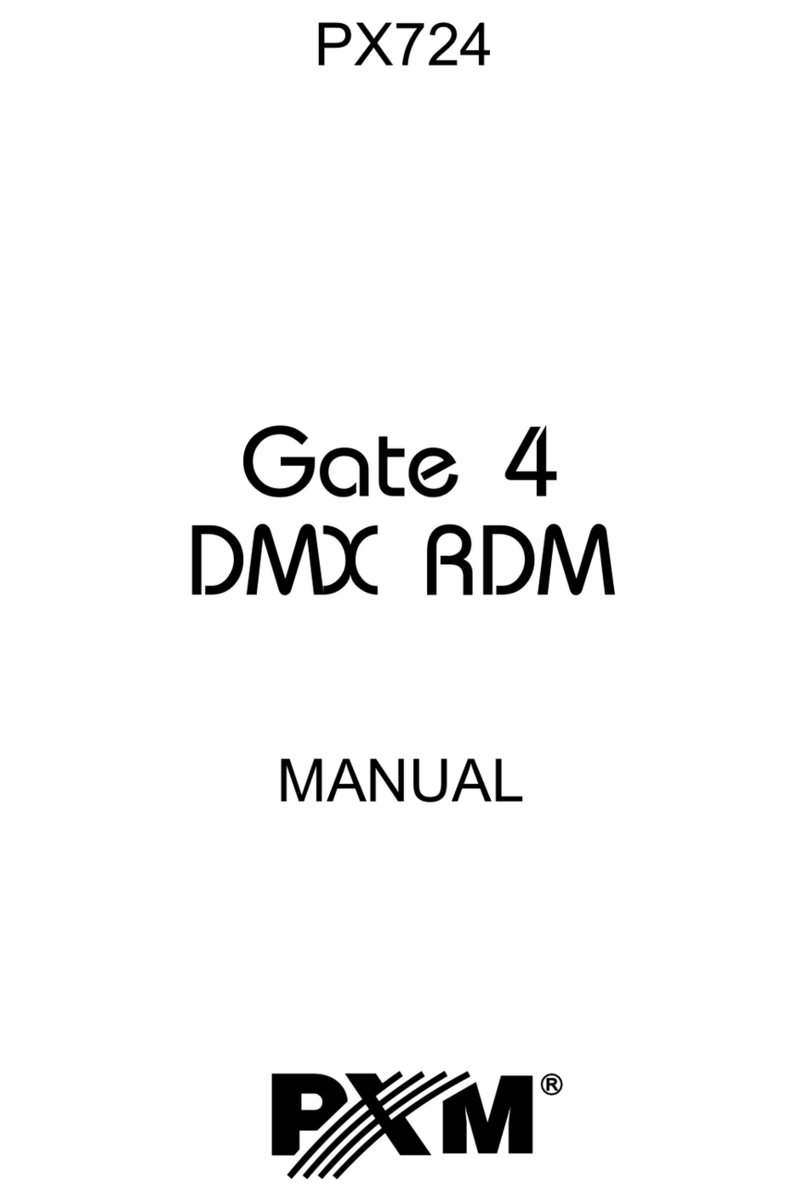ESI 250DE User manual

BRIDGES
AND
@
e|sii,
—
Electro
Scientific
industries
13900
N.W,
SCIENCE
PARK
DRIVE
+
PORTLAND,
OREGON
97229
APRIL
1967
REPLACES
JUNE 1966
MODEL
250DE
ithactim
Monual
UNIVERSAL
IMPEDANCE
BRIDGE
AC
|
INT
‘DC
EXT
1
o
GEN
GEN
|
IkHs
\
BAT
TEST)
GEN
DET
IMPEDANCE
BRIDGE
250DE
wow
FO
SC
ems
oe
'
AMD
O@lcan vasa
SERIAL
NUMBER:
PART
NUMBER:
13202
Ohoaye
ght
1966 1967
Electra
Se
eatte
Inducer pe

The
following
table
lists
the
most
recent
revision
of
each
page
at
the
present
printing:
PAGES
DATE
Title
4/67
A
4/67
i
and
ii
6/66
1-1
6/66
1-2
4/67
1-3
6/66
2-1
thru
2-3
6/66
3-1
thru
3-5
6/66
4-]
thru
4-5
6/66
4-6
4/67
4-7
thru
4-10
6/66
5-1
thru
5-12
6/66
6-1
thru
6=7
6/66
7-0
thru
7-2
4/67
A
eisii
250DE
4/67

Vv,
IV,
TABLE
OF
CONTENTS
.
INTRODUCTION
1.1
DESCRIPTION
1.2
SPECIFICATIONS
OPERATION
2.1
CONTROLS
2.2
CONNECTIONS
2.3
BASIC
OPERATION
RESISTANCE
MEASUREMENT
3.1
DC
RESISTANCE
MEASUREMENT
3.2
AC
RESISTANCE
MEASUREMENT
3.3
NOTES
ON
RESISTANCE
MEASUREMENT
3.3.1
Low
Resistance
3.3.2
High
Resistance
>
PACITANCE
MEASUREMENT
NORMAL
CAPACITANCE
MEASUREMENT
CAPACITANCE
MEASUREMENT
WITH
EXTENDED
D
RANGE
CAPACITANCE
MEASUREMENT
USING
DC
BIAS
4.3.1
DC
Bias
Supply
4.3.2
Operating
Procedure
VOLTAGE
ACROSS
UNKNOWN
CAPACITOR
NOTES
ON
CAPACITANCE
MEASUREMENT
4.5.1
Series
and
Parallel
Capacitance
4.5.2
Low
Capacitance
Measurements
4.5.3
High
Capacitance
Measurements
INDUCTION
MEASUREMENT
5.1
NORMAL
INDUCTANCE
MEASUREMENTS
5.2
INDUCTANCE MEASUREMENT
WITH
EXTENDED
Q
RANGE
5.2.1
Preliminary
Procedure
5.2.2
Parallel
Inductance
5.2.3
Series
Inductance
5.3.
INDUCTANCE
MEASUREMENT
USING
DC
5.3.1
DC
Supply
5.3.2
Operating
Procedure
VOLTAGE
AND
CURRENT
IN
UNKNOWN
INDUCTOR
5.4.1
Voltage
5.4.2
Current
5.5
Cc
4
A
4
WOnNn-
ha
ie
5.4
OTES
ON
INDUCTANCE
MEASUREMENT
5.1
Series
and
Parallel
Inductance
§.5,.2
Low-Jnductance
Measurements
5.5.3
High-Inductance Measurements
5.5
USEFUL
MEASUREMENT
TECHNIQUES
6.1
EXTERNAL
DETECTOR
6.2
EXTERNAL
DC
GENERATOR
6.3
EXTERNAL
AC
GENERATOR

6.4
OPERATION
AT
FREQUENCIES
OTHER
THAN
ONE
KILOHERTZ
6.4.1
D
and
Q
Corrections
6.4.2
Accuracy
6.5
SLIDING
BALANCE
6.6
EXTEND
LEADS
WITH
AC
MEASUREMENTS
VII.
REPLACEMENT
PARTS
The
following
are
registered
trademarks
of
Electro
Scientific
Industries,
Inc.:
ESI®
Electro
Scientific
Industries,
Inc.
ESIAC®
Algebraic
Computer
ESIPOT®
Potentiometer
DEKABOX®
Decade
Resistors
and
Capacitors
DEKABRIDGE®
Bridge
Circuit
DEKADIAL®
Decade
Dials
DEKAMATIC®
Automatic
Unit
DEKAPOT®
Decade
Potentiometers
DEKASTAT®
Decade
Rheostat
DEKAPACITOR®
Decade
Capacitor
DEKAVIDER®
Decade
Voltage
Divider
KELVIN
KLIPS®
Four-terminaf
Clips
KELVIN
KLAMPS®
Four-terminal
Clamps
PORTAMETRIC®
Portable
Measuring
Instrument
PYB®
Potentiometric
Voltmeter
Bridge
Application
for
registration
has
been
filed
for
the
following:
DEKATRAN
Decade
Transformer
ii
elsii
250DE
6/66

SECTION
I
INTRODUCTION
1.1
DESCRIPTION
The
esi®
Model 250DE
Impedance
Bridge
is
an
instrument
that
measures
resistance,
inductance,
capacitance,
and
the
dissipation
factor
(D)
and
the
storage
factor
(Q)
of
inductorsand
capacitors.
The
instrument
is
battery
operated
and
completely
portable.
An
internal
generator
supplies
ac
and
dc,
and
an
internal
solid-state
ac-de
detector
indicates
bridge
balance.
Figure
1-1
is
a
simplified
schematic
diagram
of
the
instrument
in
each
of
the
four
modes
of
operation:
resistance,
capacitance,
and
series
and
parallel
inductance.
R
UNK'
RESISTOR
UNKNOWN
CAPACITOR
Viv
SERIES
%
§
oO
3
2
pom
3?
oo
RESISTOR
LR
DEKASTAT®
DECACE
BHEQSIAT
L-R-C
DEKASTAT®
DECADE
SHEGSTAT
ond
bia
ete
othis
eee
—
STANDARD
CAPACITOR
va
G
RHEOSTAT
o—_tiah
Figure
1-1.
Simplified
Schematic
Diagrams
b-R-C
DEKASTAT®
DECADE
Ret
OStAT
U-R-C
OEKASTAT®
DECADE
AHEOSTAT
Q
RHEOSTAT
©

1.2
SPECIFICATIONS
Detector:
A
solid-state
ac-dc-amplifier
null
detector
AC
Characteristics:
Input
Impedance:
Approximately
1MQ
Sensitivity:
Continuously
variable,
10
V
minimum
detectable
signal
Frequency:
1kHz
(kilocycle)
DC
Characteristics:
Input
Resistance:
Approximately
1MQ
Sensitivity:
Continuously
variable
to
1
millivolt
full
scale,
20
microvolts
minimum
detectable
signal.
Generator:
A
solid
state
ac
generator
with
transformer
output
and
diode
rectifiers
rdc.
AC
Characteristics:
Open-Circuit
Voltage:
2V
rms
Short-Circuit
Current:
70
mA
DC
Characteristics:
Open-Circuit
Voltage:
3V
Short-Circuit
Current:
40
mA
Supply
Power:
Four
1.5-volt
size
D
cells
Battery
Life:
Approximately
500
hours
FUNCTION
RANGES
ACCURACY
MAGNITUDE
D0
ORQ
RANGES
MAGNITUDE
oona
Resistance
G@t2
Main
eight
‘RUSE
tangea,
0
1
mO
per
eight
dal
division
on
ranges
01%
+
1
dial
division
lowest
R
range
Inductance
0-1200
H
tn
seven
Q=—0to105
014
(Series)
ranges
O1uH
per per
dial
division
dial
division
on
@
03%
+1
ox
{
division
|
0.040
(1
+
Q*)
Highest
+4
1/Q
+
0020
dial
eX
lowest
L
range
Other
03%
+
1
deal
division
|
0.005
(t
+
Q2)
five +
05%
*
1/0
+0020
93%
+1
set
division
|
0
040
(1
+
QO)
Lowest
|
"4
'40%
x
1/0
0020
Inductance
-1200
H
in
seven
Q
=
10
to
1000,
Highest
03%
+1d
eet
giviaton
0640
(1
+
D%
(Parallei)
ranges
O1uH
per
scale
reads
@
dial
9
+
40%
x
+
0020
dial
diviston
on
1g
hinear
in
1/Q
towest
L
range
Other
03%
+
1
dial
division
|
0005
(1 |
0D}
five
+
05%
x
1/0
+
0020
0.3%
+
1
dial
division
|
0040
(1
+
D3}
Lowest
+
40%
x
1/0 +
0020
Capacitance
0-1200.F
inseven
O-=
610105
in
two
Highest
02%
+ 1dial
division
|
0040
(1
+
DB?)
(Serves)
canges
O1pF
per
ranges,
0
004
per
a
+
40%
x0
+0
02D
dial
divigion
on
dial
division
on
towes!
C
range
lowest
D
range
Other
02%
+
1
dial
division
|0005(1
|
D?}
five
+05%
xD
+
0020
02%
+
1
dial
division
|
0040
(1
+
Dy
howest
|“
"+
40%
x 6
+
902D
els|i
250DE
4/67

R
ACCURACY
CANO
C
ACCURACY
mh
ft
at
n*
NH
Pa)
UNKNOWN
RESISTANCE
UNKNOWN
CAPACITANCE
OR
INDUC
TANCE
The
specified
accuracy
for
measurements
of
resistors,
Low-loss
inductors
and
capacitors.
ol
The
specified
accuracy
for
measurements
of
D
and
Q,
9.01
ooo
D
(OR
Q}
ACCURACY
IN
0
{OR
Q)
UNITS
°
o
106
0
{OR
Q}
Q
CIAL
READING
The
accuracy
of
inductance
and
capacitance
measurements
is
influenced
by
the
D
and
Q
value.
This
curve
shows
the
accuracy
to
be
expected
at
various
D
and
Q
values.
2
L
AND
C
ACCURACY
Figure
1-2.

SECTION
il
OPERATION
The
controls
and
connections
necessary
to
operate
the
Model
250DE
Impedance
Bridge
are
shown
in
Figure
2-1,
oo
oO
1
GEN
2
1
MAS
2
AC
DET
IAC
EXT]
INT
GEN
|
thHs
GEN
ORT
DET
Gain
IMPEDANCE
BRIDGE
250DE
creo
siti
a6
6
ero
POCIyaAmMO
GriGon
Figure
2-1.
Mode!
250DE
Panel
View
2.1
CONTROLS
FUNCTION
switch
selects
the
type
of
bridge
circuit
that
will
measure
resistance,
capacitance,
or
inductance.
RANGE
switch
selects
the
multiplier
for
each
function.
L-R-C
decade
dials
are
a
DEKASTAT®
Decade
Resistor
that
is
the
main
balancing
element
of
the
bridge,
The
setting
of
the
dials after
the
bridge
is
balanced
indicates
the
value
of
the
inductance,
resistance,
or
capacitance,
D-Q
dial
is
used
to
balance
the
phase
of
the
capacitance
or
inductance
bridge,
The
setting
of
the
dial
ye
the
bridge
is
balanced
indicates
the
value
of
dissipation
factor
(D)
or
storage
factor
(Q),

GEN-DET
switch
selects
bridge
generator
and
detector
connections,
ac
or
dc,
intemal
orexternal
generator,
The
switch
also
connects
the
internal
batteries
to
the
battery
test
circuit,
DET
GAIN
control
adjusts
the
sensitivity
of
the
ac-dc
detector
and
turns
on
power
to
the
generator.
2.2
CONNECTIONS
R,
L,
and
C
terminals
1,
2,
and
3
are
used
to
connect
unknown
resistors,
inductors,
and
capacitors
to
the
bridge.
Resistors
and
inductors
are
connected
between
terminals
1
and
2,
capacitors
between
terminals
2
and
3,
EXT
BIAS
terminals
are
normally
connected
with
a
shorting
lug.
They
allow
insertion
of
a
de
voltage
or
current
to
bias
capacitors
or
inductors.
EXT
GEN
terminals
provide
a
connecfion
to
the
bridge
for
an
external
generator.
When
the
GEN-DET
switch
is
in
the
EXT
AC
GEN
position,
the
terminals
connect
to
an
isolation
transformer
so
that
a
grounded
external
generator
can
be
used.
When
the
GEN-DET
switch
is
in
the
EXT
DC
GEN
position,
the
terminals
connect
directly
to
the
bridge.
EXT
D-Q
terminals
are
normally
connected
with
a
shorting
lug.
They
allow
an
external
rheostat
to
extend
the
range
of
the
D-Q
dial,
EXT DET
connector
is
a
BNC
coaxial
socket
that
allows
an
external
detector
to
be
used
with
the
instrument.
It
is
connected
to
the
bridge
at
all
times,
2.3
BASIC
OPERATION
Simple
operating
instructions
are
inside
the
instrument
lid,
Figure
2-2
is
a
reproduction
of
these
instructions.
2-2
elslii
250DE
4/44
_

-~-NX
een
oh
i
a
OC
RESISTANCE
MEASUREMENTS
Torn
O£T
GAIN
control
to
2
Set
FUNCTION
switch
90
Ral
of
Bx
tO.
Set
L-R-C
decade
dials
be
3.000.
Conne<i
the
uninewn
roaistor
to
R-k
terminols
t
ond
2
Set
GEN-O8T
ewitch
te
INT
OC
Adjwst
RANGE
switch
fer
mininum
datecter
deflection
Adjver
u
fd
decode
diets
ter
et
turning
DET
GAIN
conrad
|.
The
measvred
resistence
is
the
seamen
of
the
‘ba
-C
decade
dial
setting
times
the
RANGE
ond
FUNCTION
awiith
settings
CAPACITANCE
MEASUREMENTS
Turn
DET
GAIN
contre!
to
|
Set
FUNCTION
switch
ts
C,
0x0.)
of
Ox
O.00
SERIES
Set
L-R-C
decode
diats
te
3.000 ond
D-Q
dial
te
O
Connect
the
unknown
capaciter
te
C
herminats
2
and
3
Set
GEN-DET
awitch
to
INT
|
hits,
.
Adjest
RANGE
SWITCH
for
minke
dafecter
deflection
Adjwat
1-R-€
decade
dialt
ord
D-Q
dial
alternately
for
minimum
moter
deilecthen,
tuning
OT
GAIN
contre)
clockwise
te
Increase
sensitivity
an
nacessory
Tha
measured
capacitance
jn
the
product
of
the
L-R-C
darede
dial
setting
The
measured
distipation
facter
1D}
ip
the
product
of
the
D-Q
setting
times
Phe
FUNCTION
SWITCH
setting
INDUCTANCE
MEASUREMENTS
Tem
O€T
GAIN
central
te
}
Set
FUNCTION
switch
te
L
PARALLEL
HO
is
grecter
then
30,
te
L
SERIES
of
©
ie
tose
then
10.
Ser
L-8-€
decade
dinkt
te
3.000
und
0-Q
dial
te
maximum
Connec!
the
unknown
inducter
te
8-L
terminets
|
and
2
Set
GEN-OET
switch
te
INT
1
hid.
Adpest
RANGE
twitch
Fer
minimern
detector
detiecion
Adjvit
L-R-C
decade
diels
ond
D-0
die)
oltemetely
far
minl-
mum
meter
deflection,
twrnng
DET
GAIN
contral
clechwite
te
merease
sensitivity
oe:
necessary
The
moweurad
Inductance
la
the
product
wf
the
L-9-C
decode
dial
setting
Himes
the
RANGE
ewitch
setting
The
messured
steroge
focter
{Q)
ja
read
directiy
from
the
0-G
dial,
Inner
sale
fer
parallel
end
evter
wale
fer
sarias
in-
ductence
A
RUMSTON
L.R-¢
xO
oettiferee’
ah
OECADE
RHEOSTAI
fo
STANDARD
RESISTOR
STANDARO
CAPACHOR
9
%
t-@-¢
Nie
DECADE
GHEOSTAT
Figure
BATTERY
REPLACEMENT
Check
the
battery
befure
each
day's
seperation
Turn
DET
GAIN
central
te
?
and
set
GEN-DET
switch
be
BAT
TEST
ff
the
meter
deliects
beyend
the
BAT
OK
merk,
the
bottery
1s
goed.
Tha
bettery
consists
of
four
|
S-velt
D
cella
Ta
change
battery,
remeve
cover
from
battery
cempartment
using
a
serowdriver
Replece
celle
os
shown
In
Hlytteotion
L
a
UNKNOWN
INDUCTOR
PARALLEL
wa
STANDARD
Carhacitoe
Q
RHEOSTAT
tas
15
9200
2-2.
Operating
Instructions
oie?
L-A-€
pexastat®
©
*
OECADE
RHEOSTAT
we
CAPACITOR
a
ee
©
RMeOstAt
of
104
»
5@20

SECTION
Ill
RESISTANCE
MEASUREMENT
Resistance
is
usually
measured
with
direct
current
for
maximum
accuracy,
The
Model!
250DE
Impedance
Bridge
can
be
used
to
measure
resistance
with
alternating
current,
but
external
reactance
compensation
is
usually
required,
UNKNOWN
RESISTOR
R
iia
ESISTOR
i
G2
o
4
9
9
STANDARD
oS
>
RESISTOR
L-R-C
DEKASTAT®
DECADE
RHECSTAT
Cibo
ir
|
TYPMPEDAMCE
peiogt
259k
mete
Figure 3-1,
DC
Resistance
Measurement
3.1
DOC
RESISTANCE
MEASUREMENT
1.
Turn
DET
GAIN
contro}
to
2.
This
turns
on
all
power
to
the
instrument.
2.
Set
GEN-DET
switch
to
INT
DC,
If
an
external
detector
or
generator
is
required,
see
paragraph
6.1
or
6.2,
3.
Set
FUNCTION
switch
to
R
X
1
Use
the
R
X
10
position
for
resistors
between
orR
x
10,
1.2
and
12
megohms,
4,
Set
L-R-C
decade
dials
to
3,000,
This
makes
it
easier
to
find
the
correct
range,
5.
Connect
the
unknown
resistor
to
Make
good
contact
with
the
terminals,
R-L
terminals
1
and
2,
6.
Adjust
RANGE
switch
forminimum
This
sets
the
range
so
that
the
value
can
be
detector
deflection,
found
with
maximum
resolution
on
the
L-R-C
dials.

Adjust
L-R-C
decade
dials
for
null.
Read
the
measured
resistance
as
the
product
of
L-R-C
dial
setting
times
RANGE
and
FUNCTION
switch
settings.
Disconnect
the
unknown
resistor
and
turn
DET
GAIN
control
to
PWR
OFF
before
!eaving
the
instrument,
elsli
Each
time
the
detector
indication
approaches
zero,
turn
the
DET
GAIN
control
clockwise
to
increase
sensitivity,
If
L-R-C
dial
reading
is
less
than
1,200,
turn
RANGE
switch
one
step
counterclock-
wise and
repeat
step
7
in
order
to
take
full
advantage
of
the
resolution.
3-2
250DE
6/66

3.2
AC
RESISTANCE
MEASUREMENT
For
greatest
accuracy,
resistors
should
be
measured
with
dc, The
accuracy
of
ac
resistance
measurements
made
with
the
Model
250DE
Impedance
Bridge
is
0.3%
for
resistors
of
low
reactance
with
resistance
between
1
ohm
and
1
kilohm.
The
capacitor
and
potentiometer
shown
connected
in
Figure
3-2
compensate
for
series
inductance
or
parallel
capacitance.
It
is
impossible
to
separate
the
correction
for
the
unknown
resistance
from
the
correction
for
the
rest
of
the
bridge
circuit,
{oO
59
L-R
DEKASTAT®
OFCADE
QHEQSTAT
5002
I
LOW.-LOSS
CAPACITOR
LINEAR
POTENTIOMETER
UNKNOWN
RESISTOR
IOOOpF
uy
IMPTDASCE
BOIRGE
|
156K
Figure
3-2.
AC
Resistance
Measurement
1.
Turn
DET
GAIN
control
to
1.
2.
Set
FUNCTION
switch
to
R
X
1
or
R
x
10,
Set
L-R-C
decade
dials
to
3,000,
4.
Connect
the
unknown
resistor
to
R=L
terminals
1
and
2,
Set
GEN-DET
switch
to
INT
IkHz.
This
turns
on
all
power
fo
the
instrument.
Use
the
R
X
10
position
for
resistors
between
1,2
and
12
megohms.,
This
makes
it
easier
to
find
the
correct
range,
Make
good
contact
with
the
terminals.
If
an
external
ac
detector
or
generator
is
required,
see
paragraph
6.1
or
6.3.

10;
Ws
Adjust
RANGE
switch
for
minimum
detector
deflection.
Try
to
balance
bridge
by
adjusting
L-R-C
dials.
If
a
null
cannot
be
reached,
connect
potentiometer
and
capacitor
to
the
terminals
as
shown
in
Figure
3-2.
Balance
the
bridge
by
adjusting
L-R-C
decade
dials
and
external
potentiometer
alternately.
Read
measured
resistance
as
the
product
of
L=-R-C
dials
times
RANGE
and
FUNCTION
switch
settings.
Disconnect
the
unknown
resistor
and
turn
DET
GAIN
control
to
PWR OFF
before
leaving
the
instrument.
elsii
3-4
Turn
DET
GAIN
control
clockwise
to
increase
sensitivity
if
necessary.
If
no
range
gives
noticeably
fess
deflection
than
any
othery,
try
measuring
resistance
on de
for
a
first
approximation
of
the
range.
The
null
indication
on
the
meter
may
not
be
very
sharp,
which
indicates
that
there
is
an
uncompensated
phase
shift.
Be
sure
to
use
a
low-loss
capacitor;
air
and
polyethylene
dielectrics
are
sufficient.
A
higher
value
capacitor
may
be
necessary
to
compensate
for
phase
shift
when
measuring
resistors that
have
large
reactive
components.
The
measured
resistance
is
correct
for
an
equivalent
circuit
consisting
of
a
resistor
and
a
capacitor
in
parallel
or
a
resistor
and
and
inductor
in
series,
250DE
6/66

3.3
NOTES
ON
RESISTANCE
MEASUREMENT
3.3.1
Low
Resistance
On
the
low
resistance
ranges,
the
lead
resistance
becomes
significant.
A
procedure
to
correct
for
the
lead
resistance
by
finding
its
value
and
subtracting
it
from
the
measured
resistance
is:
1.
2.
3.
4,
Short
the
test
leads
together
at
the
point
at
which
they
are
to
be
connected
to
the
unknown
resistor,
Measure
the
resistance
of
the
leads.
There
is
no
loss
of
accuracy
if
the
resistance
of
the
leads
is
measured
on
the
same
range
that
the
unknown
resistor
will
be
measured
on,
Connect
the
leads
to
the
unknown
resistor
and
measure
the
resistance,
Subtract
the
lead
resistance
(step
2)
from
the
measured
resistance
(step
3).
3532
High
Resistance
On
the
high
resistance
ranges,
take care
to
avoid
leakage
across
a
resistor
under
test,
Insulation
with
a
resistance
of
109
ohms,
which
is
adequate
for
most
purposes,
will
cause
a
measurement
error
of
1%
if
it
shunts
a
10-megohm
resistor.

SECTION
IV
CAPACITANCE
MEASUREMENT
The
Mode!
250DE
Impedance
Bridge
measures
capacitance
in
terms
of
a
two-element
equivalent
circuit
consisting
of
a
capacitor
in
series
with
a
resistor.
The
internal
ac
generator
and
detector
of
the
Model
250DE
bridge
are
tuned
to
1
kilohertz
(kilocycle),
Other
frequencies
can
be
used
but
an
external
generator
and
detector
are
required.
(See
paragraph
6.4).
UNKNOWN
CAPACITOR
Cc
UN'
CAPACITOR
SERIES
qi
bw
2.
¢
CaF
ores
L-R-C
DEKASTAT®
DECADE
AMEOSTAT
m
iyytmrteae
Cl
beGE
tSt0E
Figure
4-1,
Capacitance
Measurement
4,1
NORMAL
CAPACITANCE
MEASUREMENT
1,
Turn
DET
GAIN
control
to 1,
This
turns
on
all
power
to
the
instrument,
2.
Set
FUNCTION
switch
to
C,
This
is
the
preferred
D
range
for
a
prelim-
D
x
0.1
SERIES.
inary
balance
3.
Set
L-R-C
decade
dials
to
3,000
These
settings
make
it
easier
to
find
the
and
D-Q
dial
to
0.
correct
C
range,
4.
Connect
the
unknown
capacitor
Make
good
contact
with
the
terminals.
to
C
terminals
2
and
3.
5.
Set
GEN-DET
switch
to
INT
If
an
external
ac
detector
or
generator
is
1
kHz.
required,
see
paragraph
6,1
or
6,3,

10,
Us
Adjust
RANGE
switch
forminimum
detector
deflection.
Adjust
L-R-C
decade
dials
and
D-Q
dial
alternately
for
minimum
meter
deflection.
If
D-Q
dial
setting
is
less
than
1,
set
FUNCTION
switch
to
D
x
0,01,
Read
measured
capacitance
as
the
product
of
L-R-C
dial
setting
times
RANGE
switch
setting.
Read
the
measured
dissipation
factor
(D)
as
the
product
of
D-Q
dial
setting
times
FUNCTION
switch
setting.
Disconnect
the
unknown
capacitor
and
turn
DET
GAIN
control
to
PWR
OFF
before
leaving
the
instrument,
4-2
Turn
DET
GAIN
control
clockwise
to
increase
the
sensitivity
if
necessary
.
As
the
null
is
approached,
turn
the
DET
GAIN
control
clockwise
to
increase
sensitivity.
If
there
is
some
difficulty
in
balancing
the
bridge,
especially
if
the
D
is
greater
than
1,
it
may
be
due
to
a
sliding
balance.
See
paragraph
6.5.
If
L-R-C
dial
reading
is
less
than
1.200,
turn
RANGE
SWITCH
one
step
clockwise
and
repeat
steps
7
and
8
in
order
to
take
full
advantage
of
the
bridge
resolution.
If
the
frequency
is
other
than
1
kilohertz
(kilocycle)
see
paragraph
6.4,
els|i
250DE
6/66

4.2
CAPACITANCE
MEASUREMENT
WITH
EXTENDED
D
RANGE
The
D
and
@
ranges
of
the
bridge
can
be
extended
by
use
of
an
external
rheostat
connected
to
terminals
provided.
Figure
4-2
shows
the
ranges
for
which
this
technique
is
advisable.
STORAGE
FACTOR
(Q)
i00.)=—
«1000
10,000
0.0l
0.1
1
{OkHz
>
W
Z
kHz
Lu
=>
o
0.1
kHz
os
LL
0.01
kHz
100
1d
I
0.01
0.001
0,000!
DISSIPATION
FACTOR
{D)
Figure
4-2.
Dand
Q
Range
1.
Remove
shorting
lug
from
between
EXT
D-Q
binding
posts.
2,
Connect
an
external
rheostat
between
EXT
D-Q
binding
posts.
3.
Balance
the
bridge
using
external
rheostat
and
D-Q
dial.
4,
Calculate
D
D=
f,
0.628
8
+
Dasa)
The
lug
may
be
pivoted
to
one
side,
See
Figure
4-3,
The
measured
capacitance
is
the
product
of
the
L-R-C
dial
setting
times
the
setting
of
the
RANGE
switch,
D
is
the
dissipation
factor
FL
is
the
frequency
in
kilohertz
(kilocycles}
Ry
is
the
resistance
of
the
external
D
rheostat
in
kilohms,
D
is
the
D-Q
dial
reading.
dial
fi.
=
1
if
the
internal
generator
and
detector
are
used,

EXTERNAL
RHEOSTAT
ey
UNKNOWN
CAPACITOR
SERIES
re
j
oO
‘oO
UNKNOWN
cl
A
Cc
CAPACITOR
RANGE
RESISTOR
se
CAPACITOR
DETECTOR
D
RHEOSTAT
Lyé]
L-R-
ofKasTAT®
DECADE
RHEOSTAT
[
T)IMPEGANCE
BRIDGE
=
ESDOE
Figure
4-3,
External
D
Rheostat
4-4
esli
250DE
6/66

4,3
CAPACITANCE
MEASUREMENT
USING
DC
BIAS
Some
capacitors
need
a
polarizing
voltage.
Electrolytic
and
tantalum
capacitors,
for
example,
may
give
erroneous
readings
unless
they
are
biased
to
prevent
polarity
reversal
during
test.
Many
electrolytic
and
tantalum
capacitors
can
be
damaged
by
the
reverse
half=cycle
of
an
alternating
current,
although
not
generally
by
a
low
voltage
level
such
as
used
in
the
Model
250DE
Impedance
Bridge.
4.3.1
DC
Bias
Supply
The
de
bias
should
be
supplied
from
o
power-limited
source
in
order
to
prevent
damage
to
the
bridge
in
case
the
unknown
capacitor
terminals
are
shorted,
The
de
supply
circuit
is
shown
in
Figure
4~4,
SUPPLY
LIMITING
VOLTAGE
VOLTAGE
RESISTOR
|
CONTROL
E
Ry
Rp
(VOLTS}
{OHMS}
{OHMS)
]
0,27
2
O O
1.5
0.56
5
BYPASS
CAPACITOR
2
V.0
10
boy
3
2.7 25
1€
4
4:7
40
1SuF
4.5
5.6
50
VOLTAGE
CONTROL
&
10
100
Rp
9
22
250
12
39
400
LIMIT
RESISTOR
15
56
500
Rh
22.5
150
1.5k
p——4
[1
24
150
1.5k
BATTERY
E
.
han
28
220
2.5k
VP-
30
270
2.5k
45
560
3.0k
67.5
1.2k
10k
90
2.2k
20k
103.5
2.7k
30k
120
3.9k
50k
225
13k
100k
300
27k
250k
Figure
4-4.
DC
Bias
Supply
Circuit
The
power
in
the
circuit
shown
is
limited
to
1
watt
by
resistor
R,-
Values
shown
are
for
commonly
available
voltages.
The
limiting
resistors
can
have
tolerances
of
20%
and
should
be
rated
at
5
watts
or
more.
If
the
proper
value
of
resistance
is
not
available,
use
a
larger
value
rather
than
smaller.
The
voltage
control
potentiometer
may
differ
from
the
listed
value
by
a
factor
of
2.
It
should
be
rated
ot
|
waft
or
more.
Table of contents
Other ESI Media Converter manuals


